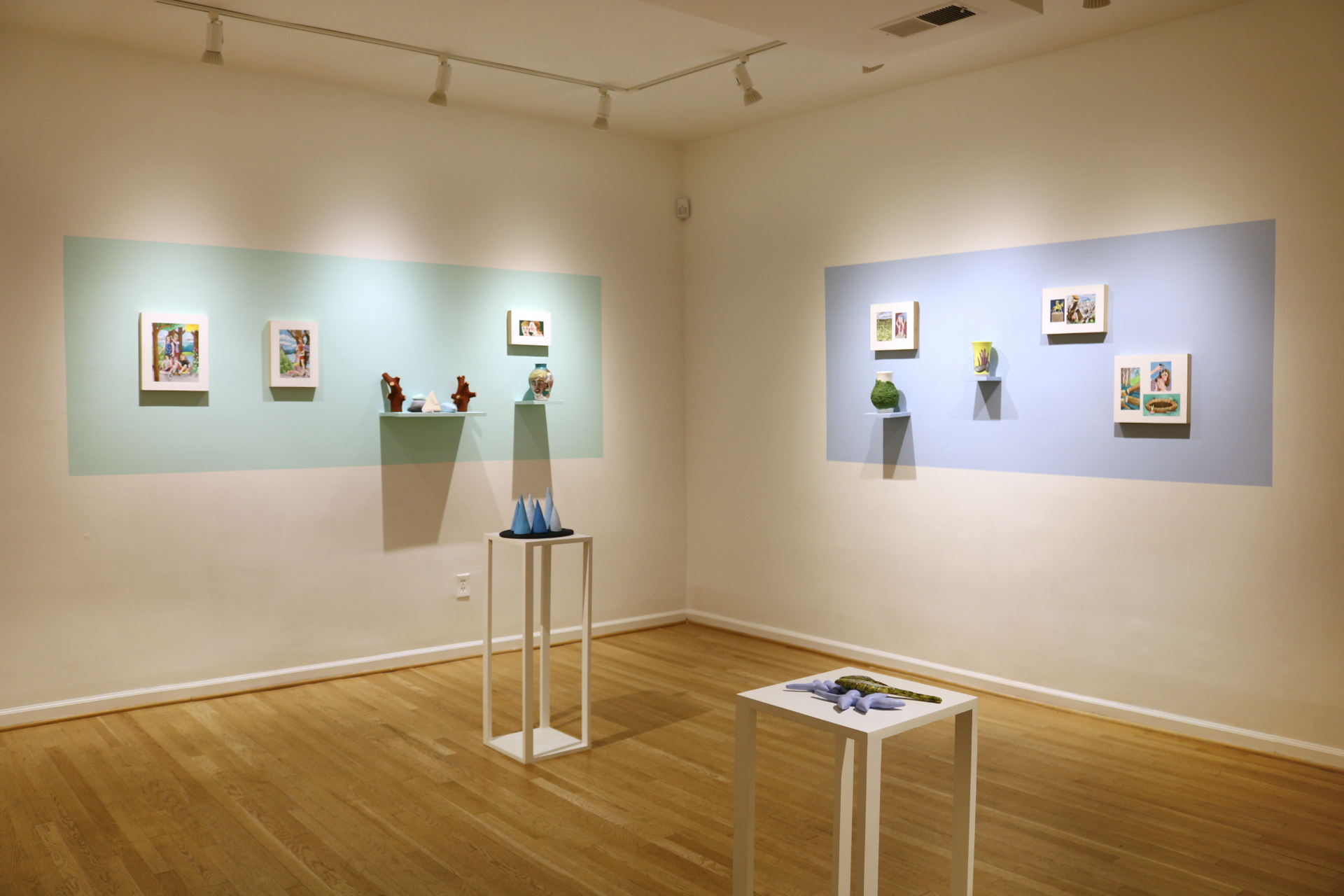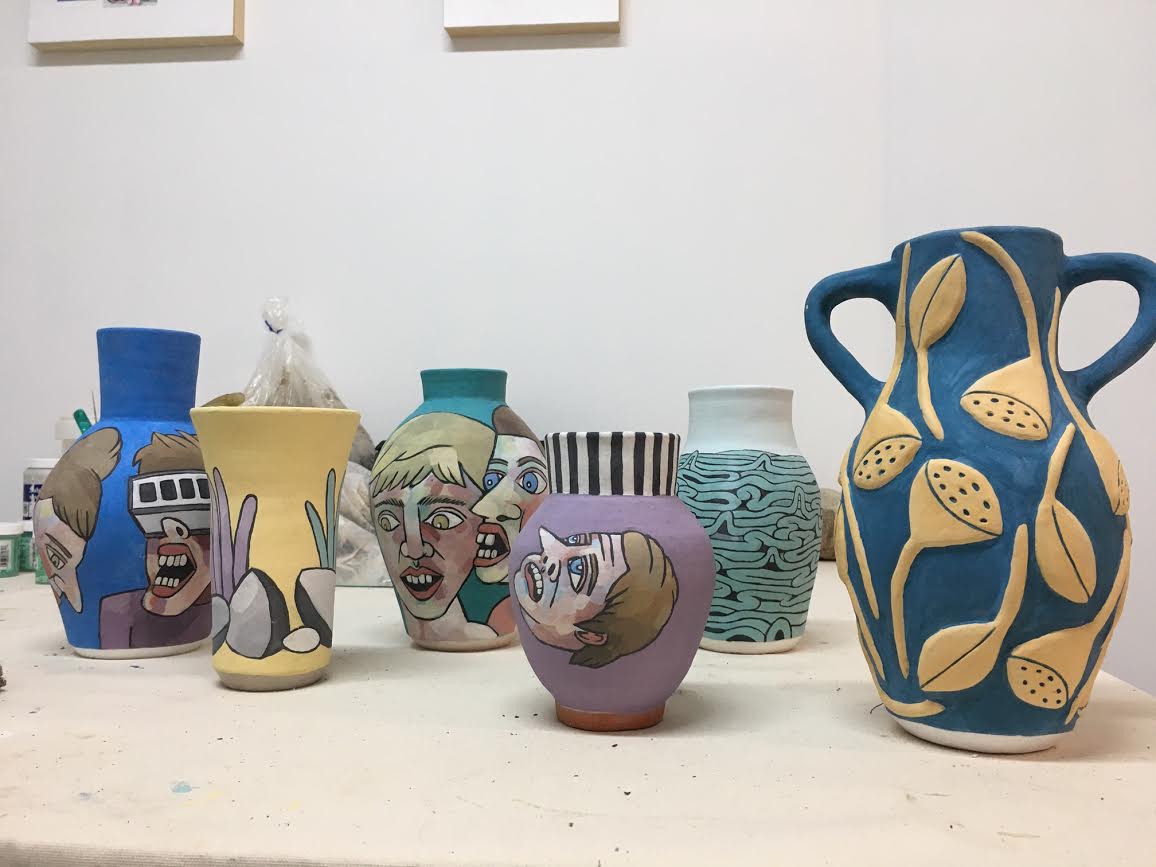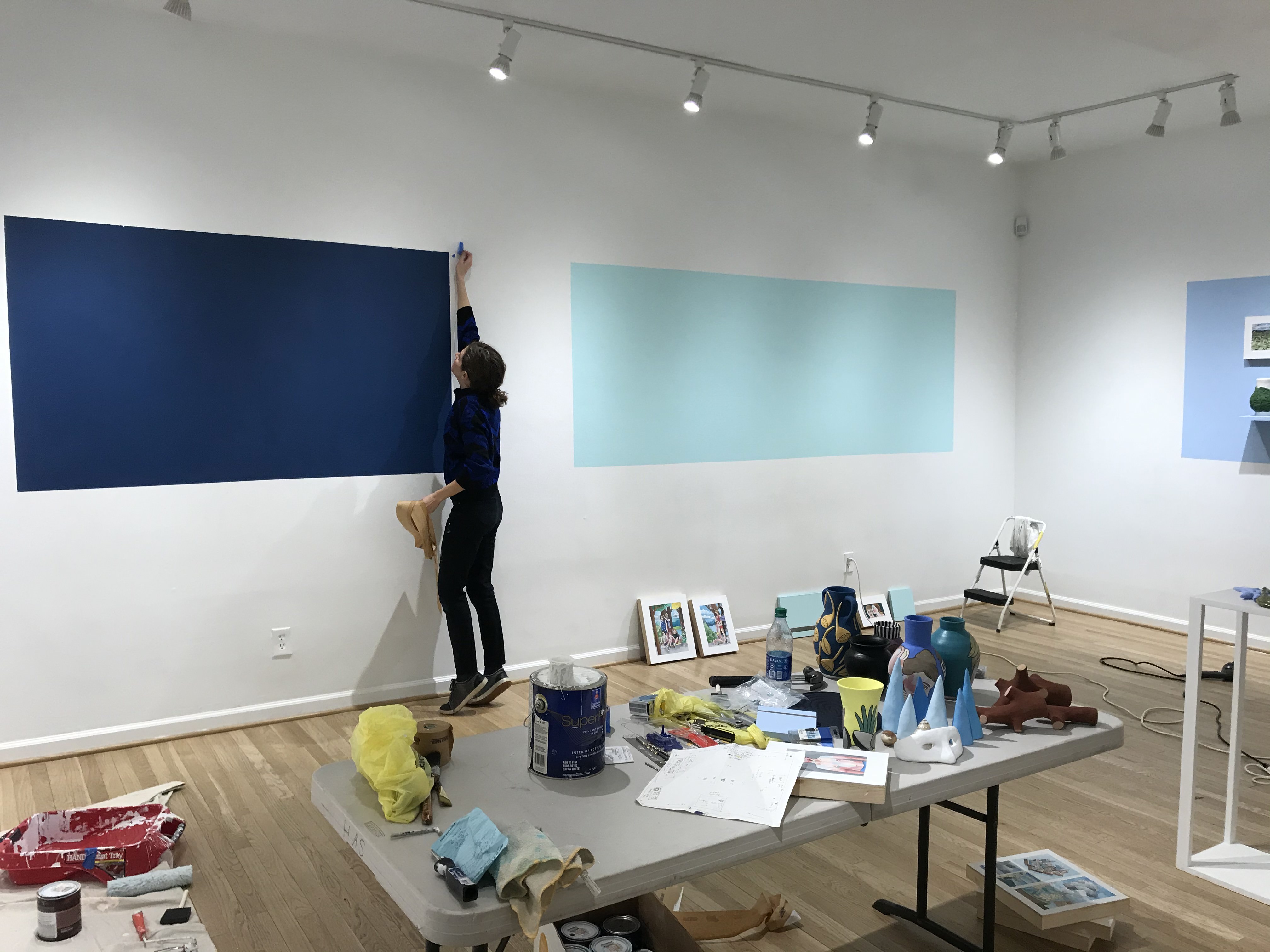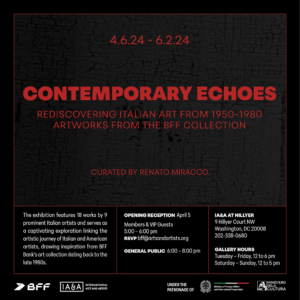
Outliers: Q&A with Emily Campbell
Emily Campbell is a visual artist and educator working in Baltimore, MD. She holds an MFA from Maryland Institute College of Art and a BA in visual arts from Mercyhurst University. Previous solo and group exhibitions include those at the Institute of Contemporary Art (Baltimore, MD), Maryland Art Place (Baltimore, MD), St, Johns College (Annapolis, MD), Gallery CA (Baltimore, MD), Push Gallery (Asheville, NC), The Delaware Contemporary (Wilmington, DE), School 33 (Baltimore, MD), and Arlington Art Center (Arlington, VA). She has participated in residencies at Can Serrat (Barcelona, Spain), the Kimmel Harding Nelson Center (Nebraska City, NE), Vermont Studio Center (Johnson, VT), and Woodstock Byrdcliffe Guild (Woodstock, NY). Campbell currently teaches at Maryland Institute College of Art and Anne Arundel Community College.
Outliers was on view at Hillyer on March 6 – 29, 2020.

Your exhibition centers around themes of dystopia and detachment. How did you become interested in these themes and why did you decide to focus on the experiences of “outliers”?
I initially was interested in the theme of detachment for formal reasons. My drawings and paintings use very uniform and deliberate lines, and everything is described with the same amount of detail. This creates a certain level of predictability even when there are uncontrollable and inexplicable actions among the figures—I am intrigued by this contradiction. Additionally, I often depict a group of people that are closely interacting with one another but there is a massive emotional distance at the same time. My work adopts the visual vocabulary of comics but due to the unsettling detachment it is more difficult to decipher the motives and psychology of the individuals.
I became interested in the theme of dystopia due to the inspiration I find in a range of sources, including sci fi, botanical illustration, ancient mythologies and historical imagery. The fusion of diverse subjects generally creates an unsettling hybridity to the character and landscapes, producing the dystopian vision. I decided to have the focus be on the experiences of “outliers” because I am fascinated with remote, precarious, and claustrophobic spaces and how these spaces could produce atypical psychology and detached behavior in their inhabitants.

How do you use landscape and scenery to convey the inner thoughts and desires of the figures you depict? What relationships are you exploring?
An example of landscape being used to convey the inner thoughts of a person would be in my painting called Reverie. In this work there are two stacked images, the image above depicts the edge of a sharp cliff with massive purple and white clouds in the background. The landscape is isolated, simultaneously alluring and dangerous. Below this is a portrait of a person with their eyes closed and head down facing, there are a pair of hands gently holding the face. The landscape could express either the silent dreams, wishes, or desires of the figure, and it’s ultimately for the viewer to decide the relationship.
You draw inspiration from Greek mythologies, sci-fi illustrations, and historical imagery to explore ritual and hedonism. Are there any specific narratives or characters you are drawn to or reference in your works?
I am interested in rituals and other events where usual hierarchies and norms are suspended. To provide an example, a historical event that I have recently referenced in my work is the military parade of Caesar on his official entry to Rome. Italian renaissance artist Andrea Mantegna recreated the elaborate procession and depicted soldiers, musicians, the spoils of war, exotic animals, and captives along with Caesar on a triumphal chariot—all featured to form an awe-inspiring depiction of the event. I am drawn to this historical event because of the range of human interactions, folly, and struggles that took place.

Your recent work incorporates 3D objects made of plaster and stoneware with your paintings and drawings. What made you decide on these forms and what is your process for creating them?
The vases are wheel thrown and decorated with underglaze while the other clay and plaster sculptures are hand built. Some of the sculptures were made out of curiosity to see what parts of my paintings—rocks, plants, etc. would look like as three dimensional objects. Additionally, the process of making the paintings is slow, they take me a long time to make and involve a lot of revisions. I enjoy working sculpturally because the process is more physical and I can often work through ideas faster.
Similar to the line work of my paintings—highly controlled, yet depicting inexplicable actions, I am attracted to the ordered symmetry and stability of the vases and place them with my paintings of precarious landscapes or interactions.

What are you currently working on and how do you hope your work evolves in the future?
I am plotting and planning new ideas for my paintings and sculptures. One of my new studio goals is to enlarge the scale of my work. I would also like to do more hand building with clay. I feel that I can be playful when I work with different media and push my ideas further into abstraction.

